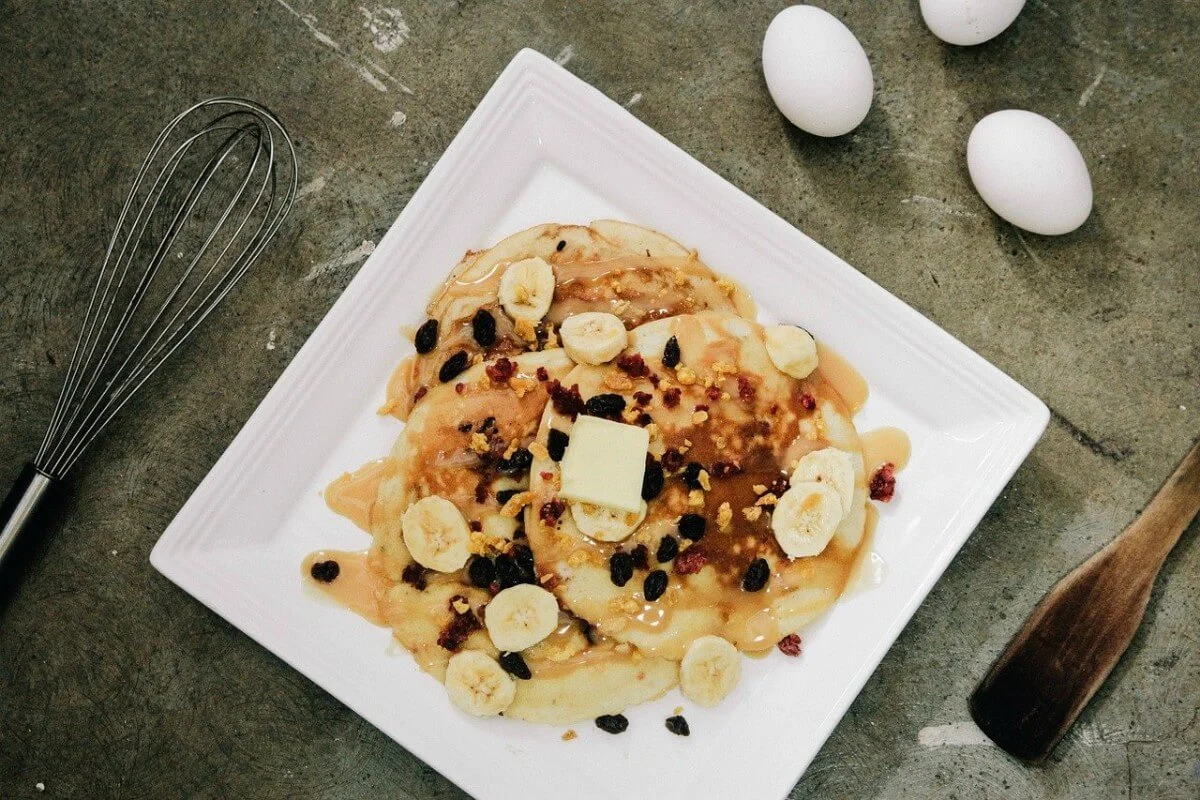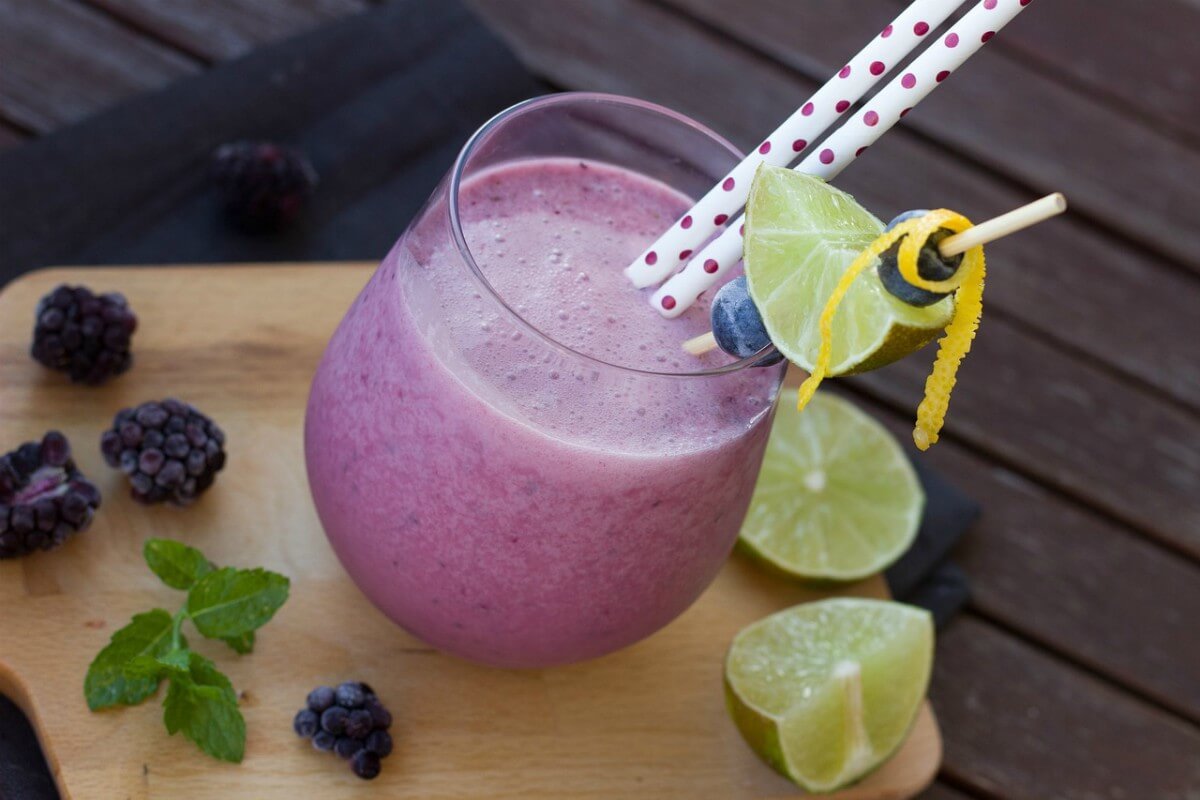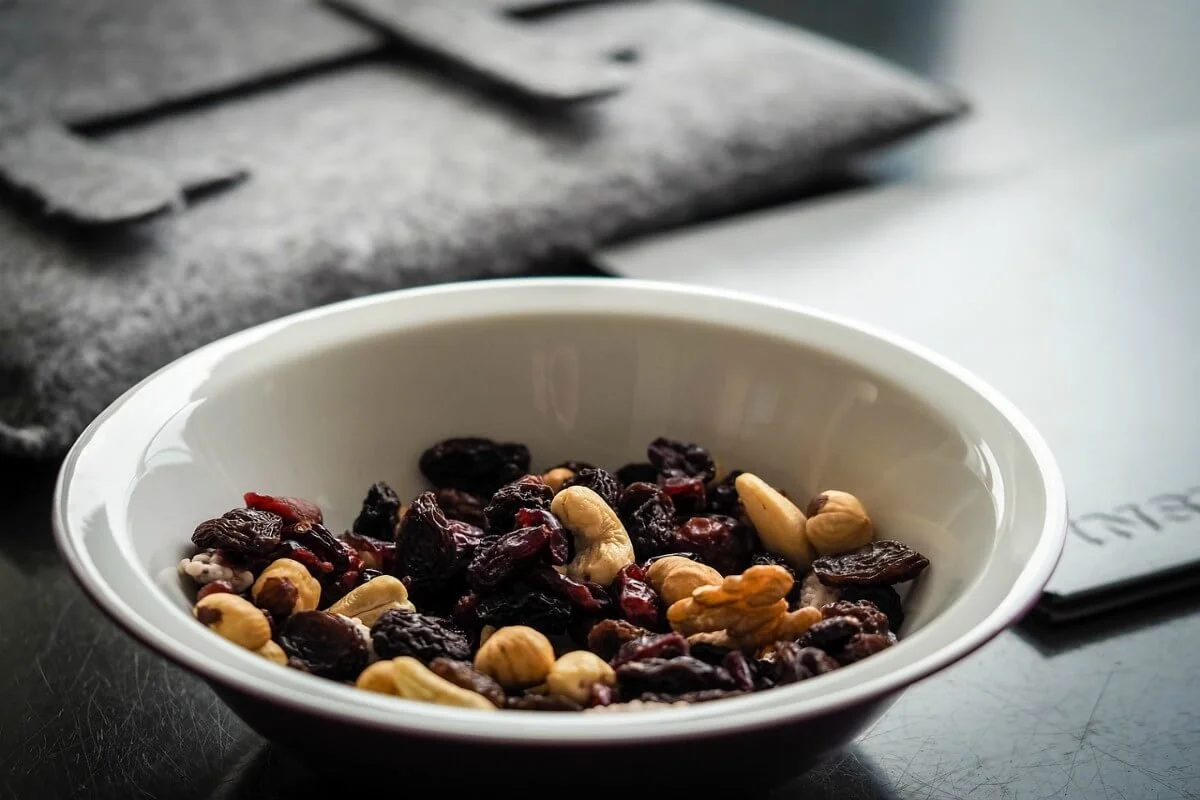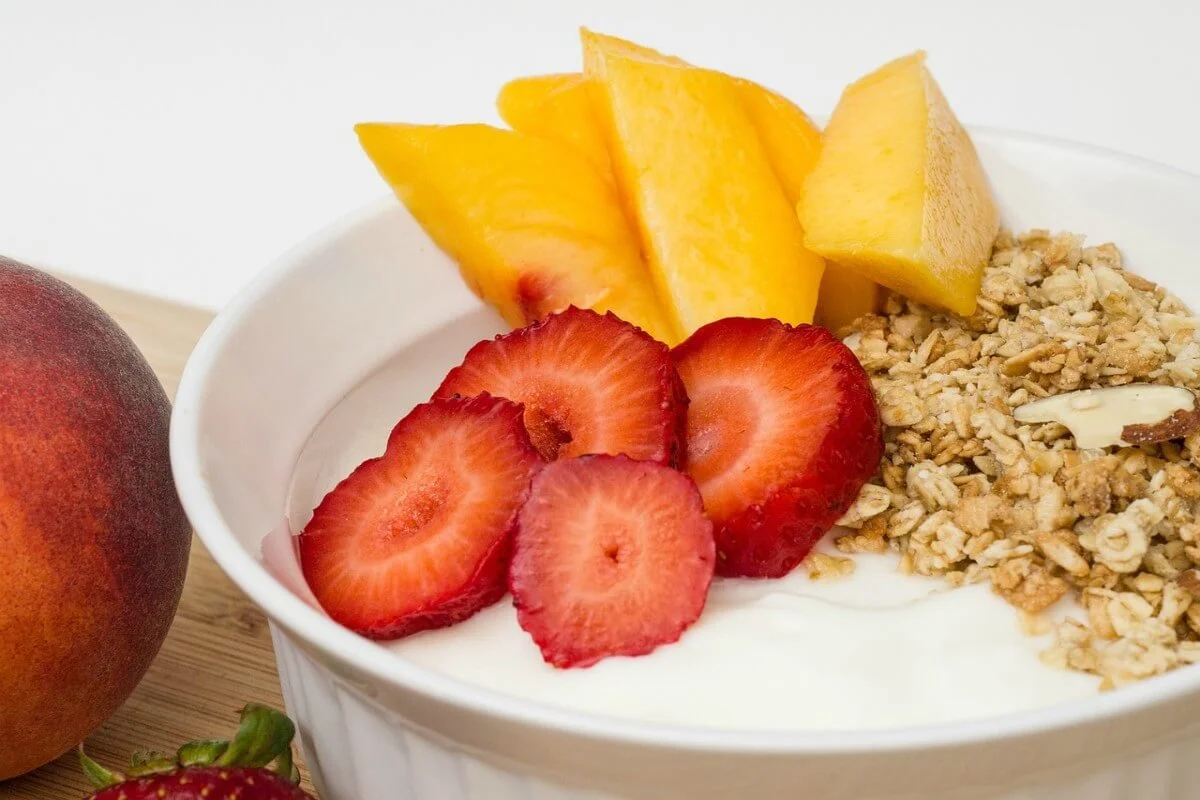8 Healthy Snacks Options Your Kids Will Love
Discover > Texas Mom Blog > 8 Healthy Snacks Options Your Kids Will Love
I admit, my kids didn’t enjoy snacks (What wine goes well with snacks?) till they were 3 years old. They would just eat their healthy home-made meals at the designated times, and that was it. But once they hit three, it was like they had developed an overnight liking for junk food!
And as a mother, I was quite excited to see them open to trying new flavors, so I often didn’t mind offering them crackers and cookies and chicken nuggets (This was before I started food blogging). It made long drives easier, one juice box in each child’s hand and we were set!
But soon enough, this newly developed habit started to feel all kinds of wrong. Unhealthy, processed, prepackaged snacks take their toll on young bodies and minds. As I started to get more conscious about the ingredients in snacks, especially snacks for kids I knew I would have to look for new choices that would satiate the ‘snack craving ‘ of the little ones without turning them into ‘high on sugar’ creatures!
So, I began scouring the Internet trying to find healthy snacks option and while I did find many, finding recipes there are both healthy and time efficient is not easy.
After a lot of experimenting, I have made a list of my 8 Healthy Snacks Options your kids may just love!
Banana Oat Pancakes
Not only are these pancakes easy to whip up but an absolute hit among the kids ! The secret is to grind the oats (how long do oats last?) into a fine flour, so the pancakes are more smoother and not very chunky. Add 1 cup of oat flour (how long does oat flour last?), 2 overly mashed bananas (how long do bananas last?), one egg, a teaspoon of baking powder (how long does baking powder last?) and milk enough to make a creamy batter.
The banana will sweeten the pancakes enough, So I personally do not add anymore sweeteners. Pour on a hot, buttered pan and cook through on both sides. You can serve these with any topping that your kids prefer. Honey, organic Maple syrup, (how long does maple syrup last?) cream cheese (how long does cheese last?)or even yogurt goes great with banana oat pancakes!
Healthy Eating for Picky Eaters
Navigate the world of nutritious choices for your picky eaters with our guide to healthy eating. Discover tips and recipes to make mealtime both wholesome and enjoyable.
Apple Cookies
These Apple cookies are a healthy way to fulfill those cookie cravings! You will need a cored and sliced apple, some nut butter of your choice and organic chocolate chips (how long do chocolate chips last?). Spread nut butter over the apple slices and sprinkle the chocolate chips over them. Alternatively, you could sprinkle with almond slivers, raisins (how long do raisins last?) or coconut shavings or even hemp hearts (how long do hemp hearts last?)!
Over Baked Egg Bites
This 1 ingredient egg bite can never go wrong. All it needs is an egg! Break eggs into a muffin tin and sprinkle with salt and pepper. Bake for 15 minutes and enjoy them as nice little grab and go healthy snacks!
Fruit Smoothies
You can never go wrong with fruit smoothies!
Go wild with your imagination and your child’s preference in picking what foods go into the smoothie. I would say always add the banana and milk . Mangoes and berries make great additions too!
Popcorn
Popcorn (how long does popcorn last?) may be thought of as a junk food, but it is really a well-rounded and nutritious whole grain. That is, if you do not load it with added sugars or synthetic flavorings. Make your own popcorn at home with organic corn kernels.
You could choose to air pop them or pop them in some butter on the stove. Sprinkle some grated parmesan on top and they make an exiting and fun snack for kids of ages 2 on wards. Popcorn is also satiating as late night snacks when the cravings are real!
Trail Mix
Trail mixes (how long does trail mix last?) are a fun way to get in a lot of essential minerals into our kid's bodies.
Nuts, seeds and dried fruit (how long does dried fruit last?) combine to make a typical trail mix recipe. Nuts and seeds have heart healthy fats, manganese, zinc and copper. Dried fruit provides a great source of sugar. It can be one of the top healthy snacks in your kids menu.
Trail mixes are easy to make because there is no cooking involved. They don't spoil and you could carry them anywhere!
Nut free trail mix: pumpkin seeds (how long do pumpkin seeds last?), watermelon seeds, green raisins, puffed rice (how long does puffed rice last?) and chopped dates.
Nut trail mix: cashew nuts, salted pistachios, coconut shavings, puffed rice, roasted peanuts, almond slivers, black raisins and dried cranberries (how long do dried cranberries last?).
A good trail mix is so wonderful to keep at hand as healthy late night snacks to munch on!
Yogurt
Yogurt is an excellent healthy snack for children. Some yogurts contain live bacteria and a great probiotic for children's gentle tummies. Most yogurts in the market are loaded with sugar and artificial flavorings. Stick to plain Greek full fat yogurt and get imaginative with what you can add to it.
Some granola (how long does granola last?) and peaches with a dash of honey will make a lip smacking yogurt healthy snack!
Cheese
And by cheese, I do not mean the processed, plasticky thing that comes in squares in the market. While cheese is a great source of healthy fat, calcium and protein eating highly processed cheese-like products which are being marketed as cheese really beats the purpose.
There are several varieties of cheese which you can try before your kids pick a favorite. Soft cottage cheese (how long does cottage cheese last?) spread on crackers or toasted bread with a drizzle of honey on top is just delicious. A hard cheese like a parmesan stick is great to nibble on. cheese really is as versatile as it is healthy.
The Importance of Consuming Healthy Snacks During Childhood
When it comes to maintaining a healthy diet, the debate over whether or not children should be allowed to snack has been going on for a long time. Is it healthy to snack, or is it unhealthy? Does it foster unhealthy behaviors at mealtimes? And if you are going to nibble, what kind of treat do you opt for?
Most nutrition experts agree that a decent, balanced diet should consist of three meals a day and two predetermined snacks and that this schedule is entirely acceptable from a health perspective. In addition, a significant body of evidence from scientific studies indicates that including well-planned snacks in one's diet might enhance the overall quality of the diet.
The idea behind this is that if you often nibble on 'healthy' items, you will have less of a tendency to unconsciously graze on things lower in nutritional value, such as cookies, candies, and salty and savory snacks. (What wine goes well with savory snacks?) For this reason, most diets and guides to healthy eating that you see in publications like magazines and newspapers include snacking as an option.
Snacks scheduled ahead of time are not a nice idea for small children; they are required. Healthy snacks increase the number of nutrients consumed throughout the day, such as iron, calcium, and vitamins. They also provide the opportunity for youngsters to have their energy levels boosted.
Why Should Kids Eat Healthy Snacks?
For example, a three-year-old child with an average calorie need of roughly 1,480 per day. Then, consider all the instances in which the child may not finish eating or even refuse to eat any of their meals. What about when they feel under the weather and have stopped eating?
Since children's stomachs are only roughly the size of their fists when they are closed, it is possible that they may not get all of the nutrients they need for proper growth and health from their three primary meals alone. Consequently, youngsters need nutrient-dense snacks to boost their energy levels, and the ideal options are those low in sugar (to avoid dental decay) and low in added salt.
In the nursery, you can make and offer a broad variety of nutritious snacks without adding to the already demanding labor of the chef. Although scones, muffins, and dips cooked at home are delicious alternatives for snacks, you may also choose from a wide variety of delicious pre-packaged options.
When you plan your menu, it is a good idea to include snacks in your planning; in this way, you will be able to utilize snacks that are convenient on days when the main meals need a little more time, and you will be able to save homemade snacks for days when your workload is less demanding.
Remember that most homemade snacks may be prepared in large quantities and stored in the freezer until required. Including snacks on your menu in advance is not only convenient but also the greatest method to avoid serving the same snacks over and over again.
How to Get Kids to Try New Foods
Transform mealtime into an adventure! Learn effective strategies on how to encourage your kids to explore new flavors and embrace a diverse and healthy palate.
Healthy Snacks Are Fuel For Kids
Children seem to have a limitless energy source and are always learning new things and developing their skills. Food gives us the energy to go about our daily lives, and the food children consume critically. Not only do children need fuel for their day-to-day lives, but they also require enough quantities of nutrients to support the growth and development of both their bodies and their brains.
The amount of energy that a child requires is significantly more if they are active or participate in sports. The task of satisfying your children's hunger might sometimes be difficult. It appears as if kids are always exploring the cabinet for snacks to satisfy their hunger throughout the day.
Children generally have an excellent sense of their hunger levels and can adjust the amount they eat to meet their fluctuating daily energy requirements. Snacks are an essential component of a healthy diet. They should be regarded as a means of increasing the number of vitamins, minerals, and other nutrients your children consume rather than as an opportunity to indulge in treat foods, which typically deliver the required amount of energy but contain a significantly lower proportion of the nutrients.
The Food and Nutrition Guidelines are the ideal place to begin since they offer the number of servings that should be targeted daily to assist children in meeting their nutritional requirements, also known as Recommended Dietary Intakes (RDIs). By using this method, you will be able to seek to fill in the spaces between your major meals with nutritious snacks.
This also means that you do not have to restrict yourself to "snack foods," which are often poor in nutrition and rich in saturated fat, sugar, or salt. You may eat anything you want whenever you want.
Creating Healthy Snacks That Are More Appealing To The Eye Of Your Children
Children need to consume a diet that is both nutritious and well-balanced so that they may continue to grow and develop normally. A child's regular diet should include a variety of fruits and vegetables, and snack time is an excellent opportunity to do so.
Because children's stomachs are smaller than those of adults, they are less likely to consume enough food at meals to keep them feeling full and energetic until the next mealtime. As a result, snack time is an excellent opportunity for parents to take in those supplemental vitamins and minerals. In addition to this, they come with several advantages.
Healthy Snacking Leads to Healthy Habits
Your child may establish good eating habits that will serve them well for the rest of their lives if provided with a balanced diet consisting of three nutritious meals and two snacks daily. The provision of a nutritious and well-balanced diet aids in the development of a healthy relationship with food, as well as proper portion management, eating (and enjoying) a wide range of foods, including fruits and vegetables, and eating more of these foods.
Children are less likely to develop poor eating behaviors, such as eating out of boredom or in response to emotional reasons, if they start developing these beneficial habits early. They also learn to eat when hungry and stop eating when they are full, a skill many grownups have trouble with.
Healthy Snacks Gives Kids The Boost They Need
Because kids' stomachs are smaller, they can feel full after eating a more manageable amount of food. Therefore, skipping snacks might make it more difficult for them to satisfy the recommended dietary requirements for a balanced diet.
The addition of two modest snacks each day that offer fruit, vegetables, low-fat dairy products, or whole grains enables children to make up for any nutritional deficiencies that may have been caused by the meals they ate for breakfast, lunch, and supper. Snacks are a great way to give youngsters a burst of energy to help them go through the remainder of the day.
Snacking Benefits A Child's Overall Health
The probability of children getting illnesses such as cancer, diabetes, high cholesterol, high blood pressure, and heart disease is reduced when they begin forming good eating habits at an early age.
Children are more likely to have better oral hygiene if they consume a diet higher in fruits and vegetables and lower in "junk food," defined as food with high levels of added sugar. Children who consume a healthy diet, which includes making informed decisions about what to eat for snacks, have a lower propensity to overeat items rich in calories and carbs. They are also more likely to maintain a healthy weight throughout their lifetimes.
Snacking Helps Power Brain Development
Because their tummies are full, children who snack on nutritious foods are generally more equipped to listen and learn at school. They are more attentive in class as well as have more energy overall. Children who lack food become cranky, exhausted, and less aware. A child's appropriate growth and development may be greatly aided by consuming a healthy snack.
Now that we are aware of the many positive aspects associated with eating nutritious snacks, the question is how we can encourage our children to consume the fruits and vegetables essential to their bodies' proper functioning. Preparing healthy snacks for children that are enjoyable not only encourages them to try new things but also helps them forget that they are even eating nutritious food in the first place.
Healthy And Visually Appealing Snacks For Kids
Frozen banana: An ice cream to make a deliciously sweet dessert that is also good for you. Just shave slices of banana and place them in the freezer for the night. If you put the bananas in a food processor or a blender the next day, you will get a healthful and creamy snack, which will taste very much like ice cream.
Apple slice: Kids may find that apple slices are more palatable and a lot of fun to eat. To make them even more enticing, serve them with a bowl of peanut butter on the side for dipping.
Fruit kabobs are delicious to the eye and enjoyable to eat. Make a healthy snack that is both adorable and nutritious by forming grapes into the shape of caterpillars. Using cookie cutters to create fascinating shapes out of fruit is another method to make it tastier.
Ants on a log: This healthy snack is perfect for a mid-afternoon pick-me-up or as a pleasantly surprising addition to your child's lunchbox. To create "ants on a log," you only need to spread peanut butter inside celery and top it with raisins.
Broccoli trees: These look like dinosaurs to a child, broccoli looks like a tree. Why not make it entertaining by bringing the dinosaur toys to the table and "sharing the trees" with everyone else? Include an interesting dip on the side, such as ranch, blue cheese, or cottage cheese, to make it more enticing to customers.
Zucchini spaghetti: Kids adore spaghetti. This more nutritious option offers a taste experience comparable to classic spaghetti noodles.
Advice On How To Steer Your Children Toward Healthy Snacks Option
Dinnertime has evolved into the part of the day that you dislike the most. The children do not seem interested in the salad or the dish you prepared. They are now in the process of haggling over chicken nuggets and macaroni. You know the significance of proper nutrition for your active children's development and growth. But as of late, you haven't been able to muster the strength necessary to engage in these never-ending fights at meals.
You put the salad away with some reluctance and then unwillingly crack open a package of frozen chicken nuggets as you ponder how to convince your children to eat healthier. How can you get them to eat their vegetables and other healthy foods?
You need a few tricks to convince kids to eat nutritious foods, whether you're a preschool instructor, a daycare provider, or a stressed mom. We consulted professionals in the fields of childcare and nutrition to get the answer to a topic that everyone is curious about: "How do you convince youngsters to eat healthily? ”
Here are some suggestions and methods to encourage children to choose healthier foods:
Make mealtimes with your fussy eaters less stressful by putting these eight tried-and-true strategies into practice. These suggestions can help you take constructive steps in the right way, but we can't guarantee that your two-year-old won't again toss their carrot sticks on the floor. We can help you get off to a good start.
1. Give Options
No one enjoys being coerced into doing anything, and this is particularly true for rowdy toddlers and older children striving to develop their sense of autonomy. This guiding idea is applicable even at the family dinner table.
Even while giving your child the option to choose between apple slices and celery with peanut butter may not seem like much, it satisfies their need for independence while allowing them to maintain control over their diet. If your child feels like they had some input into preparing a new nutritious dish or cuisine, they may be more enthusiastic about trying it.
2. Let Them Choose
Giving your children the autonomy to choose what goes on their plate is yet another approach to encourage them to try out different meals and exercise their independence. The majority of children, while it may take a few attempts, will be more ready to add nutritious items to their plates if they are given the freedom to pick for themselves.
3. Introduce Exciting Meals
Children have a natural reluctance to try new things, and this includes a lot of meals that are good for them. So, what exactly is the answer? Introduce your kid to new meals by mixing them with nutritious ones they like.
Be careful to provide them with various foods, including fresh vegetables and fruits, whole grains, and proteins, while they are still developing their preferences regarding tastes and behaviors.
If they are hesitant to try a new dish or don't like the flavor when they first try it, you might try to combine it with something they already love eating. Try serving the carrot sticks with a dipping sauce that they like, for instance, if they are not a big fan of carrot sticks. If kids do not like broccoli, you may try sneaking some into their omelets or mac & cheese to get it into their system.
4. Snack Smarter
Snacks are a part of everyday life for young children and adults, but it's crucial to ensure they don't go out of hand. Make sure to maintain the portion sizes of children's snacks on the smaller side. One of the things you should aim to avoid is destroying their appetite for dinner by giving them snacks too close to the time dinner is served. If it's getting near to dinnertime, you may want to give them a taste of any vegetables or other items you're using in the dish you're preparing.
It may be convenient to calm a fussy youngster by offering them a plastic bag of cheesy crackers, but this is not the most effective method for teaching them to make good food choices. Your kid will feel fuller for longer if their snacks are high in protein and fiber. Giving your kid a selection of healthy snacks can make snack time fun while exposing them to new foods that you can include in other meals, such as supper and lunch.
5. Teach Them About Food
If they are already interested in and familiar with the topic, children are likelier to try a nutritious meal for the first time. Because children are inherently curious, taking them to a farm or a local farmer's market will pique their interest in foods such as vegetables, grains, fruit, and dairy products. As a second activity, you may show them photos or movies describing the processed food goes through in the body.
6. Let Your Kids Help You While Preparing Meals
If children have a role in preparing a new dish, they are more likely to taste it, especially if it is one they have created themselves. Simple activities like weighing out items, mixing the contents of a dish, or tossing a salad are all excellent places to begin.
They will watch how complete dishes and entire meals come together as they accomplish these easy activities, providing them with a foundation for when they are older and responsible for making nutritious meals. When in the kitchen with preschoolers, you may take things more slowly and stick to easier recipes, but the result is well worth it.
7. Don’t Force Them
The choice is important in fostering a healthy diet, as discussed earlier in this section. It is possible to cultivate adventurous eaters in children by introducing them to various meals and cooking methods. Still, it is doubtful that they would develop a preference for every dish they try. In fact, despite all of your best efforts, you could be dealing with a fussy eater here.
Food must be provided in various formats and with a range of distinct seasonings. You should never coerce or pressure fussy eaters to eat with you; instead, do all in your power to encourage them.
8. Inspire Them
Children are tremendously impacted by their surroundings, which include their culture, the media, and their families. The effect of one's parents is very significant. The attitudes and behaviors of parents toward food may lead to either healthy or disordered eating in their children. The encouraging news is that there are several practices connected with the development of healthy eaters, including the following:
Encourage youngsters to try new and different kinds of nutritious meals.
Affirm them whenever you see them choose nutritious options.
It is important to ensure that the youngster is surrounded by people who eat healthfully so that they may learn by example.
Take some pressure off yourself to get your children to eat well.
Developing Good Routines
Helping Your Kids Develop Good Habits
You significantly impact your children's eating and drinking routines, whether you are the parent or a caretaker for them. When you make it a routine to eat meals and drinks low in added sugars, saturated fat, and salt and high in fiber, the children you care for may also grow to appreciate these foods.
This is especially true if you make it a practice to consume foods and beverages rich in fiber. If the kid you care for does not immediately like a new cuisine, you should not get frustrated by this development. Many times, a child has to be exposed to a new meal on many occasions before they would taste it.
Be a Role Model
As a parent or other caregiver, you influence the number of physical exercise children gets. You do not need to be skilled at any activities to participate. Simply get up, walk about, and demonstrate to them how much fun it is to be active. They may come to like it as well. Instead of watching television, playing video games, or browsing the internet, you may set a positive example for others by walking or riding a bike. Find something that both of you want to do and that you can do together.
Discuss Maintaining a Healthy Lifestyle
Take the time to speak to your children about how they might benefit from various foods or physical activities as you learn more about improving your health and enhancing it for your family. For instance, if you are going for a stroll with your children, you should bring them along and allow them to choose the path. Talk about how going for a stroll together makes you feel better and is an enjoyable way to pass the time.
Teachable Opportunities
Raise your voice if you notice others making poor decisions. Guide them toward healthier selections or tell them, "You can have a bit of that, but not too much." Have a conversation with them about why an excessively salty or highly sugared snack is not the greatest decision. Avoid putting them where they feel bad about the food or beverages they choose. In addition, you should compliment your children whenever they choose nutritious food, such as fruit.
For your child's enjoyment of physical exercise, you might try keeping them enthusiastic using statements like these. Check to see that your youngster is getting adequate rest. Your child's mental, emotional, and physical health may all benefit from getting an adequate amount of sleep.
Various health problems, including obesity, have been linked to insufficient sleep. Find out from professionals the number of hours of sleep they suggest for your child's age-appropriate sleep schedule.
Have Faith In Your Ability
Be aware that the key components to optimal health are increasing the amount you move and eating a nutritious diet. Collaborate to develop good habits.
Encourage Healthy Living Beyond the Confines of Your Household
There are likely to be several other people involved in your child's life. You can discuss with them some suggestions about healthful routines. For instance, many parents and other caregivers have jobs outside the house and so rely on the assistance of others for child care.
Your child's eating patterns, physical activity levels, and sleep schedule may be influenced by family members, caregivers, friends, or babysitters. Have a conversation with them to ensure they provide nutritious meals, snacks, and beverages.
Ensure that the caregivers give the children lots of opportunities for physical play and limit the amount of time that the children spend watching television, playing video games, or using other electronic devices.












